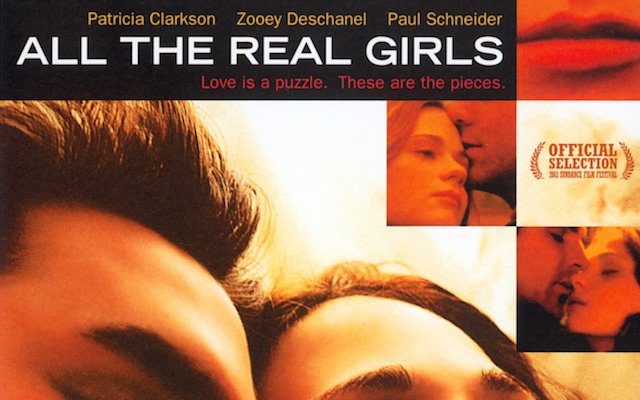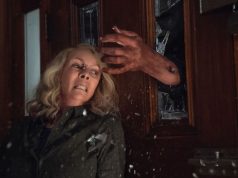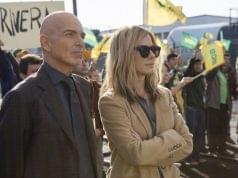
David Gordon Green isn’t even 40 years old yet and he’s already had two vastly different filmmaking careers. He’s currently in the mode of marijuana-influenced slacker comedies, with “Pineapple Express,” “Your Highness,” “The Sitter,” and several episodes of “Eastbound & Down” under his belt. But before that, he made four intensely quiet and introspective dramas — “George Washington” (2000), “All the Real Girls” (2003), “Undertow” (2004), and “Snow Angels” (2007) — that had the indie world buzzing.
All I knew about Green when I saw “All the Real Girls” at the 2003 Sundance Film Festival was that his debut, “George Washington,” had appeared on several critics’ top 10 lists and was supposed to be a real gem. (I saw it eventually, and I agree.) His follow-up was almost as widely adored. I was definitely a fan.
What I said then:
“‘All the Real Girls’ is a tender story of young love, set against the unlikely backdrop of a blue-collar Southern town…. [It’s] the sort of place where men work in factories during the week and on their cars on the weekends. They drink beer, own dogs, and get in fights. And yet, in writer/director David Gordon Green’s elegant film, they all have souls, too, ultimately capable of expressing great emotion…. Most of the film’s time is spent on establishing a very real sense of place; even if we don’t know which town this is … we definitely know the type…. The characters seem real…. At the forefront is Paul and Noel’s courtship, played with natural, sweet awkwardness by Schneider and Deschanel. It’s one of the most down-to-earth teen romances I’ve ever seen in a film, full of optimism but not glamorized…. The film has a leisurely pace, which, yes, is critic-speak for ‘it’s slow.’… But it works here. The film brings you into its world and into the lives of its characters in such a way that spending time there a pleasure.” Grade: A- [complete review]
I really liked Green’s next two films as well, and I was part of the movie-watching world that was intrigued when we heard he’d be directing James Franco and Seth Rogen in the pot comedy “Pineapple Express.” It was such an astonishing departure, like Judd Apatow making a Holocaust drama. (Note to Judd Apatow: please do not make a Holocaust drama.) Little did we know that broad comedy would become the norm for Green, much less that “Pineapple Express” would be the last good movie he made (at least so far).
I was curious to watch “All the Real Girls” again and see if it held up over time. Had those early movies of Green’s been flukes? Had he just gotten lucky before finding his true calling as a director of bad comedies? These are the questions I pondered.
The re-viewing:
Well, it turns out there were warning signs. You know who’s in this movie? Danny McBride! Playing a character named Bust-Ass! So maybe we should have seen this coming.
Otherwise, though, “All the Real Girls” is light years away from “Pineapple Express” and “Your Highness.” It’s driven by its characters and its mood rather than by its story. The humor arises naturally, the way funny moments come up in real life. Most of the guys are slackers, but that isn’t their single defining characteristic.
At the time, the most recognizable person in the cast was Zooey Deschanel, and she’d only been in a handful of films, most of them little-seen. (The biggest was “Almost Famous,” in which she played the main character’s rebellious older sister.) She affects a cute little Carolina accent here, delivering her very first line, “I like you,” something like this: “Ah lahk yew!” What she isn’t, however, is quirky or “adorkable” (she’s not “adorkable” on that new TV show that keeps insisting she is, either, but that’s another matter). The Zooey Deschanel fatigue we have suffered in recent years is not manifest here.
Her costar, Paul Schneider, was a friend of Green’s who’d been in “George Washington” and Green’s previous short films but nothing else. He’s been in a handful of mostly smaller movies since then (“The Family Stone,” “Away We Go”), but he’s probably most recognizable from his work on the first couple seasons of TV’s “Parks and Recreation.” Schneider conceived the story for “All the Real Girls” with Green, which probably accounts for its feeling of authenticity.
Speaking of authenticity, I was particularly struck this time around by what seems like a paradox. The movie feels real, natural, and lived-in. But it also feels lyrical and poetic, with lush cinematography and no extraneous camera movement. Turn off the sound and you can imagine it being a dreamy fantasy; leave the sound on and turn off the picture and you’d visualize something gritty and documentary-like. This is how all of Green’s first four movies were, depicting real life as though in a state of reverie.
I wasn’t as smitten with the film on second viewing as I was the first time. I wonder if I’d have liked it as much in 2003 if I’d already seen “George Washington,” or if Green’s debut would have overshadowed his sophomore effort, as it did for some critics. George is definitely a better movie, even more poetic than this one, and more tightly structured. But you can see a real talent emerging in “All the Real Girls” — one that I hope comes back again someday.
Do I still love this movie?
I still like it a lot, yeah. You see a lot of low-budget indie dramas at film festivals, including dozens that have the same scenario as this one (person returns to podunk hometown, stumbles into romance, etc.). But the vast majority are much more raw and unpolished than “All the Real Girls,” which manages to combine emotional truth with aesthetic beauty. Grade: B+
— Film.com




